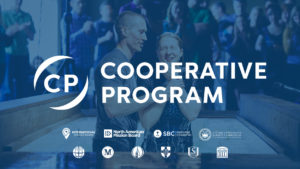
FORT WORTH, Texas (BP)–A new booklet from Southwestern Baptist Theological Seminary President Paige Patterson provides an insider’s look at the conservative resurgence within the Southern Baptist Convention.
“Anatomy of a Reformation: The Southern Baptist Convention, 1978-2004” describes how conservative leaders formulated a plan to return the convention to its biblical roots, beginning with the election of Memphis pastor Adrian Rogers as SBC president in 1979.
The booklet describes early meetings between Patterson and Houston Judge Paul Pressler in New Orleans, Pressler’s optimism and even Patterson’s feelings that the plan to move the convention back to its conservative moorings might fail.
“In the final analysis, we did not attempt a reformation movement because we thought it would succeed, but because we sincerely believed we were right about the inerrancy of the Bible, and because we did not want to tell our children and grandchildren that we had no courage to stand for our convictions. Above all, the conviction that the continued drift of the Southern Baptist Convention could spell eternal doom for hundreds of thousands of people was the principal compelling motivation,” Patterson writes.
In the end, Patterson writes, the election of conservative leaders was a result of “the intervention of God,” making the SBC the only denomination to ever return from a leftward drift to a conservative stance without fracturing.
Patterson also discusses the results of the conservatives’ initiative. He credits the leadership of conservatives and their commitment to the inerrancy and authority of Scripture for swelling the ranks of the missionary enterprise and for increasing the number of students in the SBC’s six theological seminaries.
Another lasting effect was the revision of the Baptist Faith and Message, the SBC statement of beliefs, which Patterson describes as having been infected with neo-orthodox theology in 1963. Messengers to the 2000 convention adopted language in the BF&M that reiterated Scripture’s authority over human conscience.
The conservative revival in the SBC was not without repercussions. “There are regrets,” Patterson writes, with both conservatives and moderates having “suffered hurt, sorrow, and job displacement.”
“Friendships and sometimes family relationships have been marred. Churches have sometimes been damaged even though local church life has proceeded for the most part above the fray and often remains largely oblivious to it. No one seriously confessing the name of Jesus can rejoice in these sorrows. I confess that I often second guess my own actions and agonize over those who have suffered on both sides, including my own family,” Patterson writes.
Still, if another effort at conservative revival were needed someday, Patterson said he would join it “before you can say Mephibosheth!”
“I have children and grandchildren. They deserve a chance to be exposed to orthodox theology, to read a Bible they can trust, and to know Jesus who can save them,” Patterson said. “Furthermore, I cannot relieve my own mind of the vision of men and women filing hopelessly across the precipice of eternity and into the chasm of hell. I cannot support, or ultimately leave unchallenged, any doctrine or approach that engenders doubt rather than faith,” Patterson writes.
–30–
Copies of “Anatomy of a Reformation: The Southern Baptist Convention, 1978-2004” are available for $5 each by writing to Office of Public Relations, 2001 West Seminary, Fort Worth, Texas, 76115, or calling (817) 923-1921, ext. 7220.
















